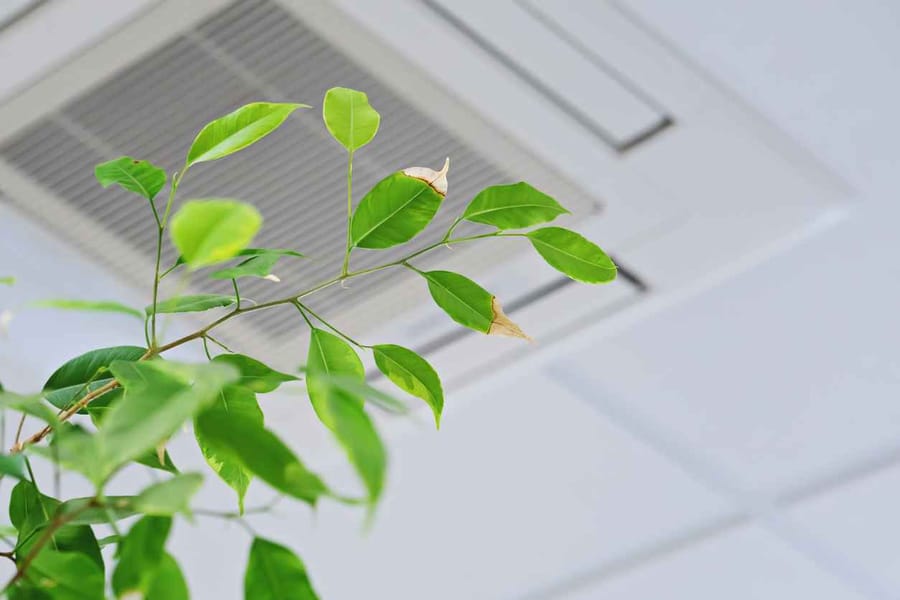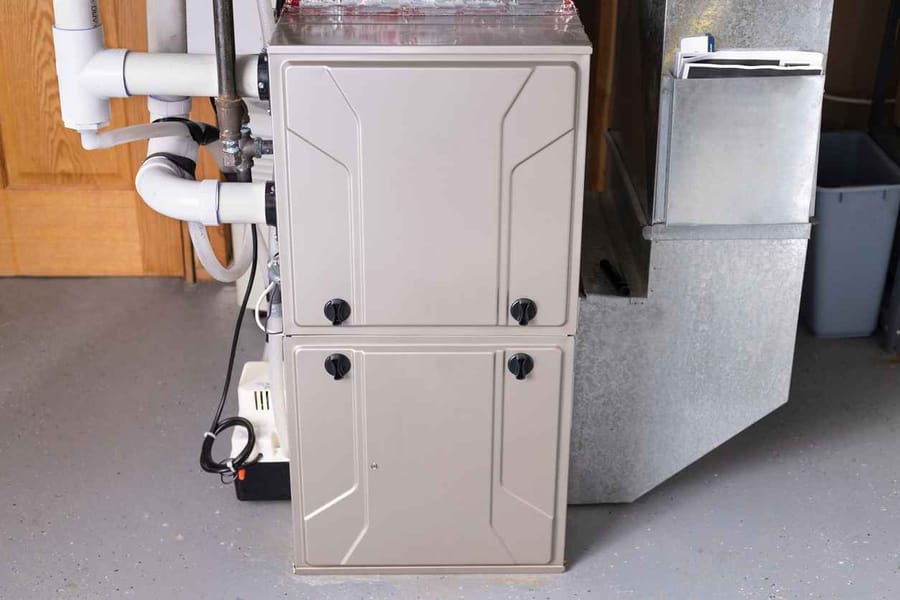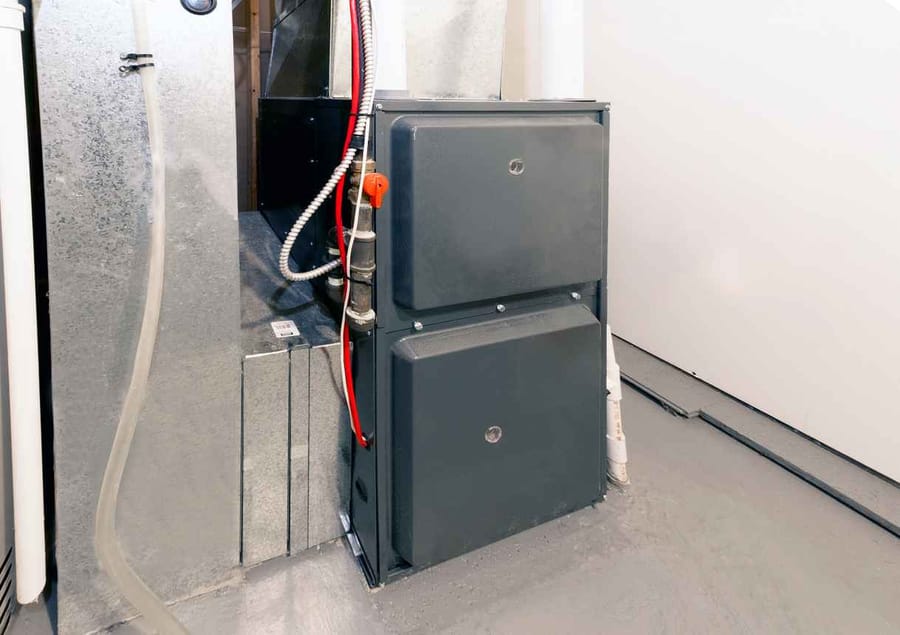5.0 Rated on Google
Top 10 Indoor Air Quality Myths and How to Test Your Home

Indoor air quality has become a growing concern for families who want healthier, more comfortable living spaces. While most homeowners focus on temperature control, the air you breathe every day can affect your energy, allergies, and long-term health. Unfortunately, many people rely on common myths and outdated assumptions that prevent them from taking the right steps toward cleaner air.
Some believe that indoor air is automatically safer than outdoor air, while others think that a few plants or a basic filter are enough to eliminate pollutants. These misconceptions not only create a false sense of security but also allow hidden problems like mold, dust, and chemicals to linger indoors.
The good news is that with the right knowledge and testing methods, you can gain a clear picture of your home’s air quality and make improvements where they are needed. In this blog, we will debunk ten of the most common indoor air quality myths and explain practical ways you can test the air inside your home.
Why Indoor Air Quality Matters
The air inside your home plays a direct role in your health, comfort, and even your home’s energy efficiency. Poor air quality can lead to headaches, fatigue, allergies, or respiratory issues, especially for children, seniors, and anyone with preexisting conditions. Over time, exposure to pollutants like dust, mold spores, or chemicals can contribute to more serious health concerns.
Beyond health, indoor air quality also affects how comfortable your home feels. Too much humidity can lead to sticky air and mold growth, while low humidity can cause dry skin, irritated sinuses, and static electricity. Balanced air quality helps you breathe easier and creates a healthier environment overall.
Air quality also impacts your HVAC system. A system that is clogged with dust, dirt, or moisture has to work harder to maintain temperature, which increases energy use and shortens the lifespan of equipment. By paying attention to air quality and testing your home regularly, you can protect your health, improve comfort, and save money on energy bills.
Top 10 Indoor Air Quality Myths
Misunderstandings about indoor air quality often lead homeowners to overlook problems or rely on solutions that don’t work. Let’s clear up some of the most common myths so you can make informed decisions about your home’s air.
1. Indoor Air Is Cleaner Than Outdoor Air
Many assume that being indoors shields them from pollutants, but the truth is that indoor air can be more polluted than outdoor air. Dust, pet dander, cleaning chemicals, and poor ventilation all contribute to buildup.
2. Air Filters Catch All Pollutants
While filters are important, they do not trap every particle. Standard filters mostly capture dust and larger particles, but allergens, bacteria, and volatile organic compounds (VOCs) often slip through.
3. New Homes Always Have Better Air Quality
New homes may look clean and fresh, but building materials, paints, and adhesives can release harmful chemicals into the air. Without proper ventilation, pollutants may linger long after construction is complete.
4. You Only Need to Worry During Allergy Season
Allergens are present year-round, and other indoor irritants like mold spores, cleaning fumes, and dust mites don’t follow a seasonal schedule. Indoor air quality needs attention in every season.
5. Household Plants Solve Air Quality Problems
Plants can add beauty and help with oxygen levels, but they are not a substitute for air purifiers or HVAC maintenance. Their impact on indoor air quality is minimal compared to professional solutions.
6. Odor-Free Air Means Healthy Air
Just because your air smells fine doesn’t mean it is safe. Many dangerous pollutants, including carbon monoxide and VOCs, are odorless and invisible. Testing is the only way to be sure.
7. Opening Windows Always Improves Air Quality
While fresh air can help at times, it can also let in pollen, dust, and outdoor pollutants. Depending on the season and location, opening windows may make air quality worse instead of better.
8. Humidity Does Not Affect Air Quality
Humidity plays a huge role in comfort and health. High humidity encourages mold growth, while low humidity can cause irritation and respiratory issues. Proper balance is essential.
9. Air Ducts Never Need Cleaning
Ductwork collects dust, debris, and sometimes even mold. If left unchecked, these contaminants circulate throughout your home every time the HVAC system runs.
10. Air Quality Testing Is Complicated and Expensive
While comprehensive professional testing is the most reliable option, affordable at-home kits can provide basic insights. Testing your air quality is easier and more accessible than many people think.
How to Test Your Home’s Air Quality
Knowing the truth about indoor air quality myths is only the first step. The next step is to test your home so you can identify specific issues and take action. Fortunately, there are several easy and affordable ways to do this.
At-home testing kits are widely available and can check for common problems like mold, radon, or volatile organic compounds (VOCs). These kits provide a basic snapshot of your home’s air but may not reveal the full picture. For ongoing awareness, inexpensive humidity monitors can help you track moisture levels and ensure your home is within a healthy range.
For the most accurate results, schedule a professional indoor air quality inspection. HVAC experts use specialized tools to measure pollutants, detect hidden problems, and recommend targeted solutions. Combining simple at-home tests with professional assessments gives you the clearest understanding of your home’s air quality and the best path to improvement.
Additional Tips to Improve Indoor Air Quality
Testing your home’s air quality is an important step, but ongoing habits are just as critical for keeping the air clean and healthy. By making small changes to your routine, you can protect your family’s health and ensure your HVAC system runs more efficiently.
Change Your Filters
One of the simplest habits is changing HVAC filters regularly. Clean filters capture dust and allergens, reducing the amount of particles circulating in your home. Using air purifiers in high-traffic areas can also make a noticeable difference, especially for family members with allergies or asthma.
Use a Dehumidifier
Humidity control is another key factor. Dehumidifiers help during humid months by reducing excess moisture that encourages mold growth, while humidifiers can add moisture during dry winter months to relieve irritation. Seasonal HVAC maintenance ties all these steps together by ensuring your system is clean, efficient, and ready to provide healthy airflow year-round.
Breathe Easier With Professional Air Quality Solutions
Indoor air quality affects your comfort, your health, and even the efficiency of your home. Unfortunately, many common myths can give homeowners a false sense of security, leaving hidden issues unchecked. By understanding the truth and testing your home’s air quality, you can take control of your indoor environment and make smart improvements.
Simple steps like changing filters, using purifiers, and controlling humidity can go a long way toward cleaner air. However, for a complete picture of your home’s air quality, professional testing and HVAC care are the most reliable solutions.
Stay Cool Climate Control is here to help you breathe easier. From indoor air quality testing to advanced HVAC solutions, our team delivers the expertise you need to create a healthier, more comfortable home.
Don’t wait for poor air quality to affect your family. Contact Stay Cool Climate Control today to schedule your indoor air quality inspection.


